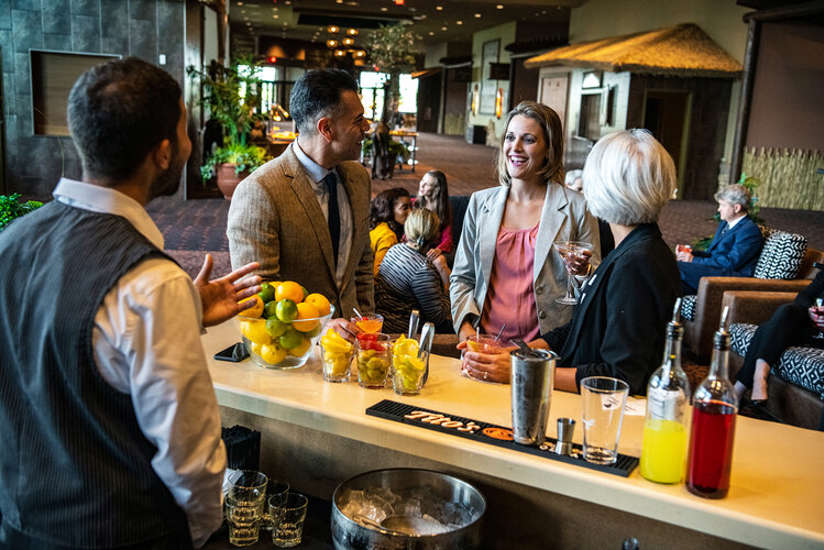
How to Create Inclusive Events
Meetings
Five tips for making meeting attendees feel welcome and accommodated
A necessary goal of today’s meeting planners is to make events as inclusive and welcoming for attendees as possible. This means strategizing to meet any special needs relating to diets, disabilities, impairments, health conditions, language differences, etc. Small modifications to venue selection, event marketing, registration or programming can make a huge difference for attendees. Remember: It may not be possible to perfectly accommodate every meeting goer—but it’s worth it to make every attempt to do so.
Here are five tips to help create inclusive events:
1. Ask attendees what accommodations they need during registration.
During the registration process, use an inclusivity questionnaire with an open box that asks “What accommodations do you require to fully participate in our event?” Or, you might choose to have attendees mark specific boxes next to topics that include dietary restrictions, mobility issues or other specific needs. Customize the questionnaire based on what you know about your attendees, destination or meeting venue.
2. Make sure the space accommodates diverse needs.
Whenever possible, always do a site visit of your potential meeting space — even at properties where you’ve held prior events. New management, renovations to the venue or changes outside the property might have implications that affect your attendees.
Work with your venue contacts on inclusivity-related details. Certain accommodations may only affect a few people — but it’s the small touches that make a difference.
-
Design signage for everyone. For example, post information—at proper eye levels—on wheelchair routes to sessions.
-
Make it obvious what the ingredients are for all meal options for attendees with dietary restrictions and allergies.
-
Consider live captioning for key speeches for attendees who speak English as a second language or people with hearing issues.
-
Be aware of sound levels and lighting choices during general sessions. People with sensitivities to lighting, loud noises or post-traumatic stress disorder could be affected. If there are times when sound or lights are needed during a presentation, provide a warning.
-
Create spaces for nursing mothers.
-
Think about having a sensory-inclusive environment, or quiet room, for people who want or need to escape crowds and noise.
3. Understand the issues and ask questions upfront.
Meeting planners should always ask venue management questions about the steps it has taken to create an inclusive, welcoming and safe environment. Addressing questions and potential hot button topics upfront can help prepare event staff for questions or issues that may arise prior to or during the event.
4. Consider an inclusivity statement for your event.
Along with looking into initiatives taken by venues, a planner can also proactively suggest or create an inclusivity statement that governs the company or group meetings and events.
Include it in registration material, collateral information or on your website. It can be as simple as one sentence that says, in essence, “Everyone is welcome at our event and we strive to be inclusive to all attendees.”
An inclusivity statement sets the tone. It also helps open lines of communication with anybody who may have a concern about specific accommodations.
5. Host networking event to welcome all guests.
Here’s an easy tip to make guests feel welcome: Schedule networking events at the beginning of your conference for attendees to meet and mingle with one another. One of the biggest barriers to making everybody feel comfortable is communication. First-day networking events help attendees make contacts and feel welcome during the rest of the event.
Kalahari helps create inclusive events
Our team can assist planners in making all meeting attendees feel welcome and accommodated. And, we’ve just doubled the size of our convention center in Wisconsin and Pennsylvania. Call our sales team at 855.411.4605 to schedule your site visit today.



